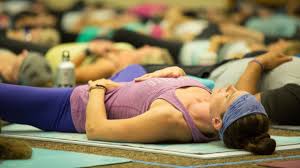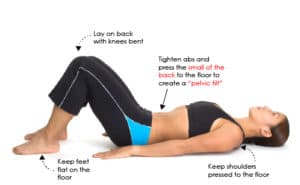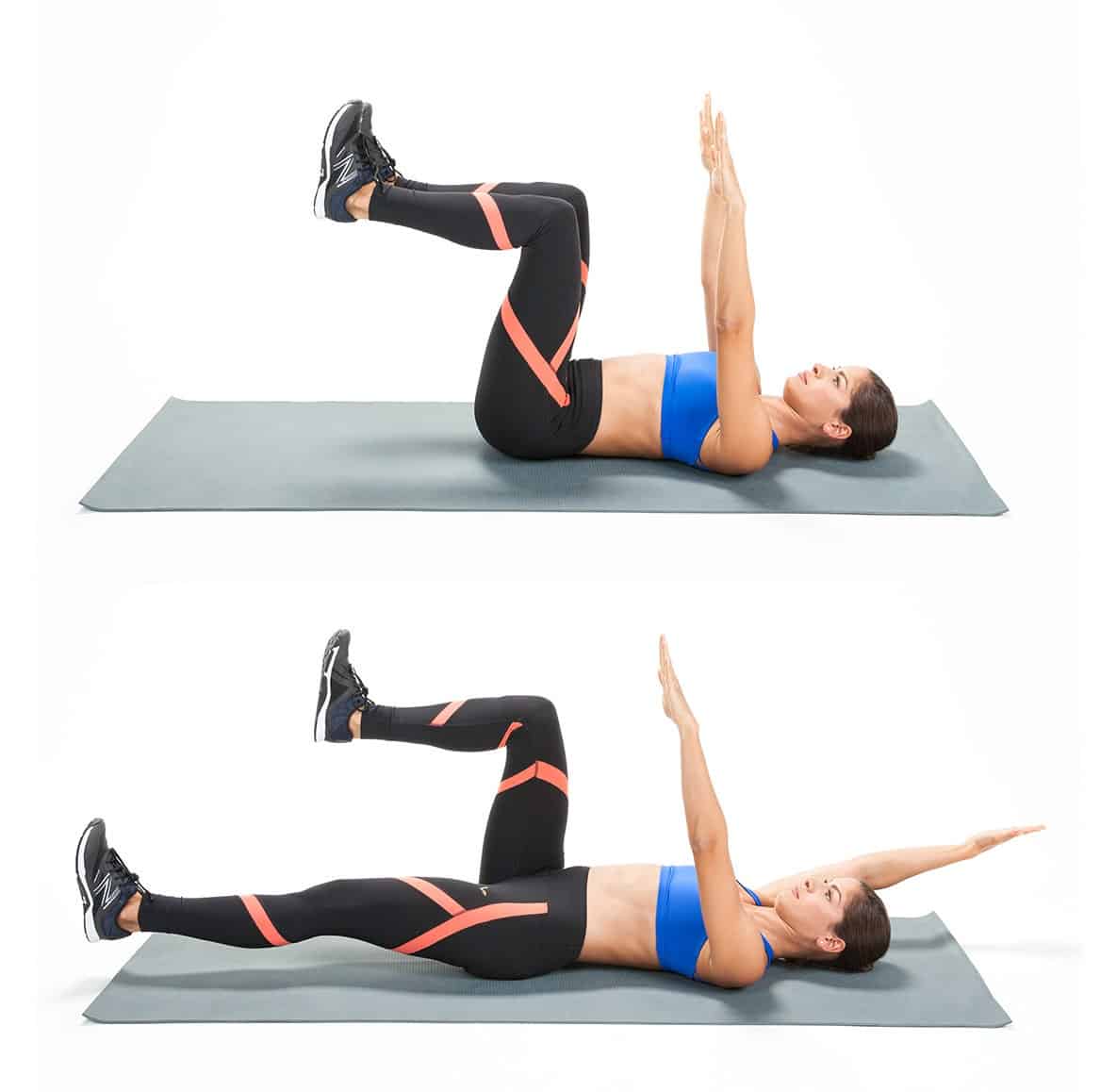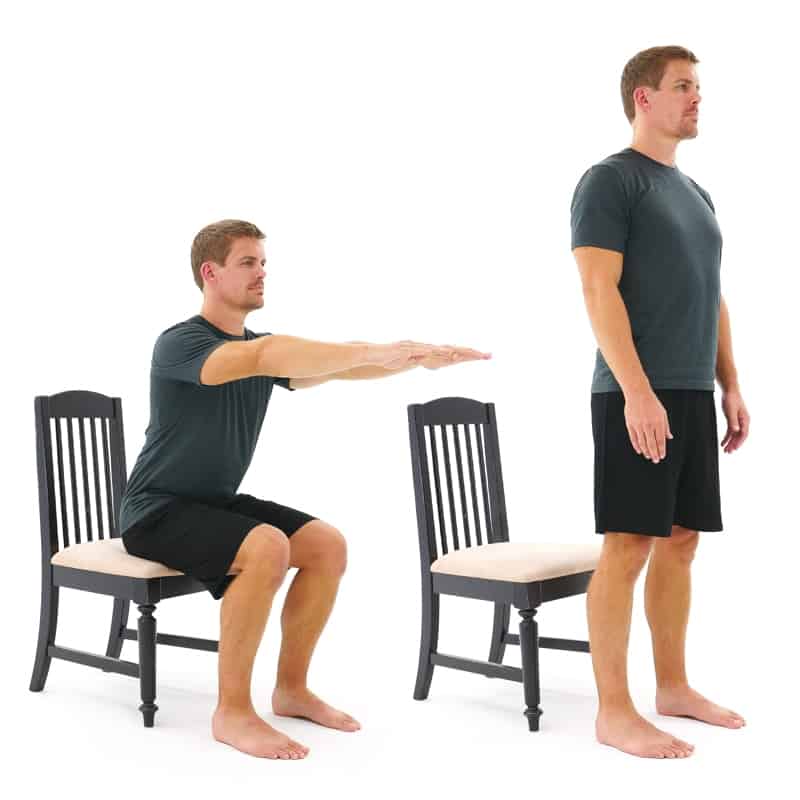
What is the core anyway?
In order to understand why core exercises can help avoid low back pain, it is important to first stop and look at what the core is.
The core is much more than the six pack muscle:
Many people think of the core as just the 6 pack muscles. The rectus abdominis is commonly referred to as such, it is the muscle running vertically one each side of the abdomen. The linea alba, connective tissue, divides the muscle in the middle. The major core musculature includes the following muscles: rectus abdominis, transverse obliques, internal obliques, internal obliques, pelvic floor muscles, erector spinae and the diaphragm. Some other muscles that contribute to the core are the gluteus maximus, latissimus dorsi and the trapezius. All of these muscles need to work together to have the best stabilizing effects, to prevent injury and to improve your posture.
The diaphragm and breathing:
As a society, we are focused on having flat stomachs and six pack abs. Many of us hold our stomachs in throughout the day which increases the pressure into our pelvic floor and chest. Diaphragmatic breathing can help to train breathing patterns, to strengthen the diaphragm and reduce stress. The diaphragm is located at the base of the lungs. When we breathe into our chest, the diaphragm becomes weakened and the neck and chest muscles have to work a lot harder. Diaphragmatic breathing needs to be practiced, at first it it may seem difficult but over time, it will get much easier and effective.
- Lie on your back with your knees bent and your head placed on a pillow. You can also place a pillow under your knees.
- Place one hand on your chest and the other below your rib cage. This will help to feel the diaphragm move.
- Breathe in through your nose and watch your hand move. The hand on the chest should be very still with only very little movement. Exhale through your mouth.
- Do 2 sets of 15 repetitions twice per day
Importance of the core:
The core is in the center of the body which help to keep us upright, to stabilize the trunk during movement of the hips and shoulders as well as protect the low back from excessive loading. A strong core is important to enhance performance and avoid injury. When thinking of performance, not only lifting heavy weights in the gym or participating in sports should be considered. Activities of every day life are a very big component such as carrying your children, picking up the groceries from the ground and doing yard work. Injuries of the low back are commonly thought to be due to one specific movement. The reality is that a history of poor biomechanics and repetitive movements with excessive rotation, forward bending and bending from side to side are the cause for injury. Learning how to engage the core and maintaining a neutral spine through all activities will stabilize the spine and avoid injury.
Exercises to train the core correctly:
Sit-ups and crunches are exercises commonly used when doing core workouts; however these movements are only targeting the rectus abdominis and may cause excessive pressures in the low back and pelvic floor. Focusing more on functional movement and engaging the deep core muscles are key to train the core effectively. The core are endurance muscles; so doing high repetitions or holding a certain exercise for a few seconds builds the core most effectively. It is very important to maintain a neutral spine through out the exercise as well as to continue breathing throughout the movement. Here are a few core exercises described.
- Lie on your back with the knees bent to 90 degrees and your head relaxed on a pillow.
- Place your hands on your pelvis (the bones on either side of your lower abdomen) and then flatten your back against the floor by contracting your abdominal muscles.
- Hold this position for 10 seconds before releasing. Breathe throughout the movement.
- Do 3 sets of 10 repetitions, holding each repetition for 10 seconds.
Dead bug:
- Lie on your back with your knees and hips at 90 degrees and your arms straight up towards the ceiling.
- Perform a posterior pelvic tilt and hold this position for 30 seconds.
- Once you are comfortable holding that position for 30 seconds, you can start moving the opposite arm and leg towards the ground while engaging your core.
- Do 3 sets of 10 repetitions, holding the working position for 3 seconds.
- Place your knees hip width apart while kneeling and your hands below yours shoulders. Brace your core in a neutral position.
- Start by lifting up one arm at a time in front you. Once you are comfortable with this, move one leg at a time while maintaining balance and a tight core.
- Then lift opposite arm and leg while maintaining a neutral spine. Go back to the starting position and lift the other arm and leg.
- Do 3 sets of 5 repetitions to start of with and eventually move to 15 repetitions.
- Lie on your stomach and place your forearms
- below the shoulders and tuck your toes to lift the body off the floor.
- Engage your core and maintain a neutral spine.
- Hold this position for 10 seconds before resetting. Do 6 sets of this.
- Once you are comfortable, hold the plank longer and longer.
Sit to stand exercise:
- Start by sitting at the edge of a chair with your hips, knees and ankles at 90 degrees. Place your feet firmly on the ground. You can cross your arms across the chest or have them straight out.
- Then slowly engage your core, apply weight into your heels and get up from the chair. Do not lean forward as much and do not use momentum. Use your legs to stand up. Ensure that your knees do not collapse in.
How can the Chiropractors at Custom Chiropractor help to strengthen your core?
As chiropractors, we are trained to look at the spine throughout movements as well as prescribing safe and effective rehabilitation exercises. Book your appointment today to learn more at Custom Chiropractor.











